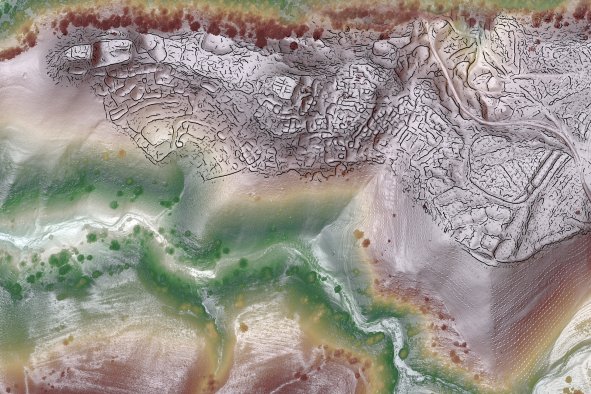Archaeologists have unearthed the remains of an "extraordinary" prehistoric house that dates back to around 8,000 years ago.
The rectangular dwelling was discovered by researchers with the Austrian Academy of Sciences (ÖAW) in Svinjarička Čuka, Serbia, which is located in the Balkans region of southeastern Europe.
According to experts, the find provides insights into the origins of sedentary communities in Europe and sheds light on the continent's early agricultural societies.
"The new finds in Svinjarička Čuka provide substantially new insights and data that are likely to change previous models on the development of settlement in the Balkans," Barbara Horejs, archaeologist and scientific director of the ÖAW's Austrian Archaeological Institute, said in a press release.
The building—described as an "extraordinary" find by the ÖAW—was constructed around 8,000 years ago from wattle and daub in combination with wooden posts. Its remarkable preservation can be explained by the fact that it was struck by a fire.
"The partially collapsed and burned architectural elements covered the floors inside the house as well as artifacts, tools and scattered vessels in the presumed outdoor area," Horejs said.
The dwelling contains evidence that its inhabitants were storing food, such as grain and seeds, providing fascinating glimpses into the lives of these early agricultural pioneers of the Neolithic period.
The Neolithic period in the Balkans began around 6500 B.C. (around 8,500 years ago) and lasted until approximately 3500 B.C. (around 5,500 years ago), although the exact dates vary depending on the specific region. This period marked the transition from hunting and gathering to agriculture and permanent settlements, with some of the earliest farming communities in Europe emerging in this region.
The latest findings from Svinjarička Čuka challenge traditional assumptions that people in the region during the early Neolithic were nomadic or only settled in one place seasonally.
"Instead of nomadic or only seasonally settled small groups, the Neolithic pioneers in the Balkans apparently built stable houses with facilities for supplies and grain storage," Horejs said.
Excavations have been taking place at Svinjarička Čuka since 2018 and in that time, archaeologists have documented several phases of settlement from the early to middle Neolithic period.
These finds have been attributed to the Starčevo culture, which is one of the earliest Neolithic cultures in Serbia and the wider Balkans. The Starčevo culture is known for introducing agriculture and the domestication of animals to the region, alongside the establishment of small, semi-permanent villages.
Do you have a tip on a science story that Newsweek should be covering? Do you have a question about archaeology? Let us know via science@newsweek.com.
Disclaimer: The copyright of this article belongs to the original author. Reposting this article is solely for the purpose of information dissemination and does not constitute any investment advice. If there is any infringement, please contact us immediately. We will make corrections or deletions as necessary. Thank you.



